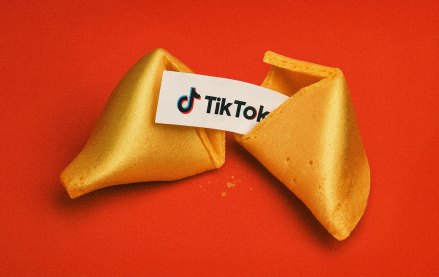Save 50% on a 3-month Digiday+ membership. Ends Dec 5.
Facebook faces increased publisher resistance to Instant Articles
Facebook’s Instant Article push is in danger of fizzling.
Many publishers are deeply unhappy with the monetization on these pages, with major partners like The New York Times throwing in the towel and many others cutting back the amount of content pushed to the IA platform. In response, Facebook is making concessions to publishers, including new subscription options, in a rare show of weakness for the platform juggernaut.
The Times is among an elite group of publishers that’s regularly tapped by Facebook to launch new products, and as such, it was one of the first batch of publishers to pilot Instant. But it stopped using Instant Articles after a test last fall that found that links back to the Times’ own site monetized better than Instant Articles, said Kinsey Wilson, evp of product and technology at the Times. People were also more likely to subscribe to the Times if they came directly to the site rather than through Facebook, he said. Thus, for the Times, IA simply isn’t worth it. Even a Facebook-dependent publisher like LittleThings, which depends on Facebook for 80 percent of its visitors, is only pushing 20 percent of its content to IA.
Enthusiasm has cooled elsewhere. It’s an about-face from two years ago, when publishers were champing at the bit to join the party. “It’s just a matter of time,” Hearst Digital president Troy Young said at the time. Cosmopolitan was the first Hearst brand to launch, in October that year. Now, Hearst is absent from the program, having determined the monetization isn’t paying off. Hearst declined to comment on the record.
Business news sites Forbes and Quartz are also absent from Instant Articles. Forbes experimented with it last year but found monetization lacking, chief product officer Lewis D’Vorkin recently said. “It left a lot to be desired in terms of monetization,” he said. Condé Nast’s priority is to drive readers back to its own sites, which is why its brands use Instant Articles only sparingly.
Instant Articles has been controversial since Facebook launched the fast-loading mobile articles feature in 2015 to keep users on the social platform longer. In Instant, publishers’ articles, signified with a lightning bolt, would load super fast. But many publishers say it doesn’t monetize as well as old-fashioned links that take readers back to the publisher’s own site. It’s also hard to see if there’s an engagement benefit to the program.
Facebook has been trying to be more responsive to publishers’ concerns. It’s launching call-to-action units that let publishers serve messages in Instant Articles stories inviting people to sign up for a newsletter or “like” their Facebook pages, after testing these with about 100 publishers since the beginning of the year. It’s also testing trial subscription signups and mobile app install promos within Instant Articles with The Washington Post, Bild and The Telegraph.
But in the past year, the ad market has become harder, forcing many publishers to look harder at pushing the subscription lever. And that’s an area where Facebook still falls short. Beyond the free digital subscription trial, Facebook hasn’t said it’s committed to letting publishers test paid subscription signups, much less lay out a timeline for doing so. Facebook still doesn’t have a way for publishers to paywall Instant Articles. Some would like to be able to regularly test how well Instant Articles are performing compared to old-fashioned links, as the Times did. (The Washington Post is running what it says is the first such test right now with Facebook.)
There are also a lot of details to be worked out when it comes to subscription signups on Instant, such as who owns the customer relationship, what data the publisher gets and how the revenue is shared, Wilson added. “The devil’s in the details.” (A Facebook rep said that for now, with the free digital trials, the publisher owns the relationship once the user signs up.)
For other publishers that aren’t heavily dependent on subscriptions as the Times is, or have lucrative direct ad sales businesses, Facebook Instant may still makes sense, though. The Washington Post is still aggressively trying to grow its subscription signups, so it’s been publishing all its articles as Instant posts because the user experience is better.
And one of Facebook’s call to action testers, Slate, gave enthusiastic testimonials about the product, saying Instant drove 41 percent of new newsletter signups, which is significant for Slate. It’s going to use the same feature for other newsletters and its app. “For us, it gives us a chance to promote other things we produce to new audiences,” said Slate senior product manager Chris Schieffer.
Publishers are still keen to demonstrate goodwill with Facebook. The Times’ experience with Instant aside, Wilson stressed that the decision to pull out isn’t necessarily irreversible.
“We haven’t closed the door on it by any means,” he said. “We’re talking to them on variety of products and found them, particularly of late, to be attentive and responsible to the issues we continue to raise. Ultimately, it’s about being able to demonstrate we can match or better the performance of links back to our site.”
More in Media

TikTok Shop sheds bargain-bin reputation as average prices climb across categories
An analysis by e-commerce intelligence firm Charm shows average prices climbing across more than a dozen key categories.

Ad Tech Briefing: The Programmatic Governance Council is a bid to reset power dynamics
As tensions over TID and GPID peak, Tech Lab is convening a council to hash out commercial ground rules.

Newsweek is building an AI Mode-like experience to customize homepages for readers
Newsweek is building an AI homepage modeled after Google’s AI Mode to increase engagement and offset declining search referrals.








